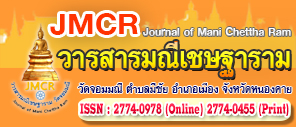THE HISTORICAL DEVELOPMENT OF THE LI’S SCHOOL OF VOCAL ART IN HUNAN BALING OPERA
Keywords:
Baling Opera,, Li’s School,, Li Xiaofeng,, Vocal ArtAbstract
Despite the vast body of literature on red culture, particularly regarding its ideological and political aspects, there remains a gap in research focused on the spiritual culture of martyrs within the context of red dance. While previous studies have extensively examined the function of red dance as a tool for political education and propaganda, few have explored its deeper role in promoting martyr spirit, especially in relation to contemporary youth. This paper discusses the historical development of the Li’s School of singing in Hunan Baling Opera, and the Li’s School created by Li Xiaofeng occupies an important position in the history of Baling Opera. The research objectives of this paper are: 1) to clarify the background of the rise of the Li’s School of Vocal Art; 2) to sort out the generation process of the Li Vocal Art; 3) to explore the value and significance of the Li’s School of Vocal Art in the cultural inheritance of contemporary opera. This paper adopts the field survey method and interview method to understand the background and generation history of the Li’s School of Baling Opera, and then analyses Li Xiaofeng's artistic innovations and contributions through literature reading, so as to divide the Li’s School of Singing into four stages of development according to the characteristics of different periods. This not only clarifies the development history of the Li’s School, but also provides some theoretical references for later researchers. The study highlights that red dance, as an evolving art form, has consistently played a significant role in promoting the spirit of martyrs across different historical periods. From the early revolutionary struggles to the founding of New China, and through the reform era to contemporary times, red dance has served as both a celebratory and educational medium. Its ability to convey the sacrifices and values of martyrs has strengthened national identity and reinforced the ideals of patriotism, heroism, and selflessness among the Chinese people. Particularly for contemporary youth, red dance remains a powerful tool for instilling a sense of responsibility, bravery, and solidarity.
References
Chen, Y. (2020). Modern Interpretations in Traditional Chinese Opera. Beijing: Arts Press.
Li, S. (2017). The Aesthetic Principles of Baling Opera. Chengdu: Drama and Arts Press.
Liu, J. (2019). The Yan School of Beijing Opera: History and Influence. Shanghai: Culture Publishing House.
Liu, J. (2021). Key Figures in Chinese Opera: A Study of Their Contributions. Beijing: Traditional Arts Press.
Luo Mengxuan. (2021). A Study on the Inheritance Pattern of Hunan ‘Nine Whips’ from the Perspective of Intangible Cultural Heritage Master's Degree Thesis, South China University of Technology.
Pan Mengge. (2020). Contemporary dissemination of traditional arts: An investigation and reflection on the promotion strategy of contemporary opera. Theatre and Film Monthly (5), 4.
Pang, Y., and Q. Li. (2023). A classic case study of productive conservation and promotion of non-legacy heritage--Taking Yueyang City Baling Opera Inheritance Research Institute as an example. Yunmeng Journal (04), 37-42.
Wang, H. (2018). Challenges in Documenting Traditional Chinese Artists: A Historical Perspective. Shanghai: Culture and History Publications.
Wang, H. (2018). Exploring the Roots of Baling Opera: A Cultural Analysis. Hangzhou: Zhejiang University Press.
Wang, R., & Maneewattana, C. (2024). The Deconstruction Of The Character Of Tosca And The Method Of Performance. Journal of Dhamma for Life, 30(3), 24-40.
Xu, Q. (2019). Continuity and Change in Baling Opera: The Legacy of Li Xiaofeng. Nanjing: Performing Arts Publishing House.
Yan Shan, Wang Yiren. (2021). Artistic Characteristics of Instrumental Song Cards of Baling Opera. Art Review (09), 4-6.
Zhang, M. (2021). Vocal Techniques in Chinese Opera: A Comparative Study. Guangzhou: Music University Press.
Zhang, T. (2020). Cultural Contexts of Chinese Opera: Baling Opera and Its Evolution. Xi’an: Shaanxi Normal University Press.
Zhang, T. (2020). Preserving Tradition: The Role of Vocal Arts in Chinese Opera. Guangzhou: Performing Arts Press.




